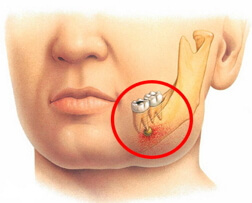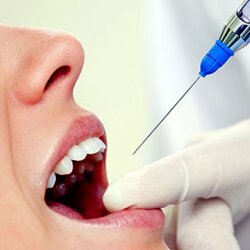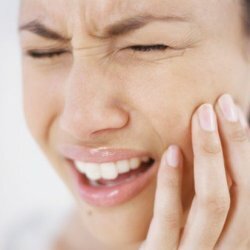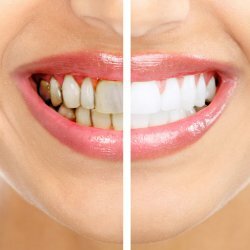Apical periodontitis
 Apodal periodontitis is an inflammation of the periodontal tissue with a topographic manifestation mainly in the apex of the affected tooth. It is indicated by a defect in the ligamentous apparatus of the tooth, destruction of a bone of various sizes with possible aggravation in the version of the jaw fracture. These conversions can be caused by infection, trauma, medications or unreasonable medical interventions. Initially, manifestations are acute, but over time they are transformed into chronic. Prolonged flow with regular actions of damaging factors can exacerbate.
Apodal periodontitis is an inflammation of the periodontal tissue with a topographic manifestation mainly in the apex of the affected tooth. It is indicated by a defect in the ligamentous apparatus of the tooth, destruction of a bone of various sizes with possible aggravation in the version of the jaw fracture. These conversions can be caused by infection, trauma, medications or unreasonable medical interventions. Initially, manifestations are acute, but over time they are transformed into chronic. Prolonged flow with regular actions of damaging factors can exacerbate.
Therapy for apical periodontitis is usually reduced to conservative healing, which is based on cleansing the root system of the tooth from inflammation-damaged tissues, closing with a root filling and recreating the crown area with restorative or orthopedic structures. If necessary, surgical methods are added. Therapies are often complemented by medication and physiotherapy. If recovery is not possible, extraction is performed.
Causes of apical periodontitis
Occurrence of apical periodontitis can be caused by causes from the outside and from the inside. Factors acting exogenously in the correlation to the oral cavity: stroke, bruise, fall, cause acute periodontal transformation in the apical area of the tooth. In the absence of intervention, they flow into the prolonged direction of the apical periodontitis. As a variant of external influence, one can also consider medical intervention, irrational points of which lead to contact trauma with instruments or strongly affecting medicaments of the apical periodontal part. Traumatic effects of a physical nature are possible with endodontic manipulations at the stages of cleansing from putrid compounds, antimicrobial rinsing of the radix system and sealing of the root with a seal.
When cleaning the channel with the use of excessive strain, both manual and machine tools, it is possible to push the working area beyond the tooth area into the apical region of the periodontal, which further causes the inflammatory transformations of the apical part. When cleaning solutions of the root area with improperly treated upper third of the tooth( without creating a taper or with excessive expansion of the canal), it is likely that the antiseptic will flow into the apex region. In the case of the use of 3-5% Hypochlorite, this can cause a significant burn of periodontal tissues and bones. The last stage of therapy of the root system is caused by the closure of the created space with synthetic compounds. When the top is broken by the mechanical action, it is likely that the filling substance is out of the tooth boundary into the apical periodontal region. This causes the transformation in the form of a burn( arsenic periodontitis), allergies( to an antidote in the form of use in the therapy of arsenic - iodine) and other moments.
The conditions denoting its effect inside in correlation to the oral cavity can be divided into influencing exo- and endogenously in relation to the tooth. External actions for the root and apical part are caused by microbes and long-term trauma. A significant increase in microbial contamination is indicated in the spread of inflammatory phenomena. This is probably due to the ailments of teeth and periodontal tissues. Penetration of microbial agents into the cavity of the tooth is possible with deep caries, aggravation( pulpitis).When the form of periodontitis is severe, in the case of significant mobility and, accordingly, pronounced extensions in the gums along the edges from the tooth, infection is likely to pass directly to the apical region through the marginal parts of the periodontal period.
Long-term traumatic effects for the onset of apical periodontitis can be indicated inadequately carried out long before manifestations of dental activities. Influence causes overestimation of the bite with excessively made seals and orthopedic structures. Prolonged tension leads to an increasing edema of pulp tissue and its consequent necrosis. Since the process is protracted, the inflammatory phenomena of the apical region of the periodontium are chronic. In correlation from the factors acting from the inside to the tooth, denote lymphogenous and vascular discharge of the infection in the apical region. This is probably due to the ailments of distant organs and body systems, with the long-term absence of therapy of these areas.
Symptoms of the apical periodontitis
Symptomatic of apical periodontitis manifests itself in a ratio from the stage of progression of periodontitis in the apical tissues.
Acute apical periodontitis is indicated by regular aching pain, which increases with tension on the tooth. There is also an awareness of the proliferation of tissues in the region of the affected tooth, sensitive responses to temperature actions, increasing manifestations on hot solutions. With the continuation of the time, the pain begins to grow and the adjacent regions of the oral cavity or in regional regions( nose, eye, ear, temple) are disposed in a number, combining with the phenomena of pronounced intoxication. These transpositions are determined by the transformation of the serous stage into purulent. Passes acute apical periodontitis from several days to two weeks. If there is no therapeutic intervention, the acute form is reconstructed into a chronic one.
Chronic apical periodontitis is the result of an acute stage of apical periodontitis, or is indicated as an autonomous manifestation in the apical tissues. The patient can not distinguish various transformations in the state of health.
Exacerbation of apical periodontitis produces significant changes in the symptomatic pattern. In the period of prolonged course, without signs of escalation, there may be: sensitivity to tension on the tooth;Visualization on the gingiva of the fistula with detachable, granulomas with oral or facial arrangement, swelling in the projection of the separation of the radix;Calculation of tooth mobility. The patient can indicate the perception of the extension of the tooth, increasing with the continuation of time, which can give out a picture of the spread of pus in the bone from the apical part and the absence of a passage for the flow of exudate. Along with increasing expansion, an increase in tooth mobility is added, determining that inflammation from the apical periodontal region moves to the marginal part. The aggravation of the apical periodontitis reflects all the above-noted phenomena, combining with strongly felt signs of aggravation of the organism's state( temperature, sleep and appetite defect, headaches).
Acute apical periodontitis
The aetiology of apical periodontitis with acute overtones is due to the rapid and active action of defective factors. These changes can cause: acute trauma( stroke, fall, bruise), microbial seeding outside and inside the tooth, introduction into the apical part of medicinal substances and traumatization with the working part of the doctor's tools. With physical influence on the apical region, microbial seeding of the root system and periodontium is not excluded.
The symptomatic pattern of apical periodontitis fits into the manifestations due to the stage of the process. During the phase of intoxication, when the process of inflammatory transformations is at the stage of nucleation, the patient notes an accurately determined pain when nibbling, nocturnal direction, in the region of the defective tooth or at the point of applying the base force from trauma, with vertical tapping, probably the designation of pain. By the end of this stage, the formation of serous exudate appears as a response to the action of negative aspects.
In the period of exudative manifestations of apical periodontitis, in which acute serous periodontitis is transformed into purulent, the range of symptoms increases. Denotes a long, with short intervals without pain, sensitivity from touch. It is painful, it is located on heterogeneous areas. There is a feeling of bulging of the affected tooth out of the arch of the jaw. Visualization of tooth swelling and swelling of the soft tissues of the oral cavity, especially the gums from the edge of the designated tooth. On the part of the general systems of the body: the submaxillary lymph nodes undergo a transformation: they increase, are painful when palpated. The patient gives a defect of well-being: pain in the head, anorexia and sleep, temperature. The period of general action of acute phenomena in periodontium is within the threshold from 2-3 days to 2 weeks.
Chronic apical periodontitis
The aetiology of apical periodontitis of chronic genesis is caused by a prolonged low-intensity effect on periodontal tissue or as a result of transformation of the acute form of periodontal transformations. The factors that cause this action, bypassing the acute stage of periodontitis, include trauma from irrationally performed therapeutic( overstimulation of the filling) and orthopedic( established not in bite construction) healing, overload of the remaining teeth due to loss of others. Differentiation of stages is based on clinical manifestations and transformations of periodontal and bone.
Chronic apical periodontitis is manifested by the small presence of external manifestations. The patient may note slight pain when nibbling, or nothing. The color of the tooth changes to a yellowish-gray gradient. There is no response to thermal interference, probably the designation of putrefactive odor. This stage of apical periodontitis is also the outcome of the healing of other forms of chronic periodontitis. Chronic granulating periodontitis is indicated by severe symptoms. The patient notes a strong pain when applying tension to the tooth, the sensitivity of expansion in the dental arch, when lifting or lowering the corresponding place of the lesion on the gum, it is possible to see the fistula with or without separation. The fistula is indicated mainly in the projection of the apex of the radix, but it may also be indicated in the marginal area of the tooth. At the stage of the opening of the fistula( that is, the presence of the detachable), the pain may subside slightly, as the outgrowth of the pus from the periodontal region is ensured. From the side of the lymph nodes there is an increase and soreness.
Chronic granulomatous periodontitis as an intermediate in clinical symptomatology and bone transformation is indicated by little or no pain, with mild tenderness when nibbling. Occasionally patients can note the swelling of the gums in the projection of the separation of the radix roots of the buccal roots of molars and premolars, which is indicated by the presence of granuloma in the region of apical periodontitis. Granulomas can have a different topography, up to the face. There may be a color change, a tooth with various manifestations( from intact to the presence of a cavity or seal).
The aggravation of apical periodontitis arises from chronic granulating and granulomatous periodontitis, less often the fibrous stage of periodontitis. Against the background of the presence of bone destruction, and hence a place for the advance of pus, the pain is not strongly marked as in the acute period. Pain is constant, combined with collateral swelling of tissues, lymph nodes increase, painful. The tooth may be prone to previous therapy or not;If there is no intervention on the part of a specialist, a cavity is marked, filled with contents with an unpleasant odor. When nakusyvanii pain. The hue can be changed. The gums are red, the mobility of the tooth is noted. The phenomena of general intoxication are strongly pronounced.
Diagnosis of apical periodontitis
The diagnosis of apical periodontitis on the collection of general data, the examination of the facial and oral region and the conduct of additional methods of medical examination are based. When questioning, specify the moments of external impact on the tooth: the transferred injuries, medical procedures. A significant contribution is made by somatic ailments. We are aware of a previous visit to the dentist and the cure of the oral cavity organs. General examination reflects the condition of the facial skull and organs of the oral cavity. When visualizing the face area, the symmetry of the face, skin integuments without transformations( subcutaneous granuloma with chronic granulomatous periodontitis), opening of the mouth without restrictions, lymph nodes are mostly enlarged, painful.
In the oral cavity, the mucous membrane is predominantly unchanged. The tooth is intact or with a seal( with overstimulation or without), or with a cavity made with detritus with putrefactive aroma. Color of the tooth is variable. With apical periodontitis, the sounding of the cavity does not give sensitivity to the body. Tapping in the vertical projection gives a positive response, as the tension on the pus increases in the apical part of the periodontal. With horizontal tapping, the reaction gives a granulating and granulomatous form of chronic periodontitis. There is a rupture of marginal periodontal ligaments. The palpation of the mucosa in relation to the apical region of the tooth gives a painful reaction, on the mucous capsule, in addition to the reddening of the gum( probably absent in the case of acute serous and chronic fibrous forms of periodontitis), there may be a transformation in the fistula with and without discharge( the mouth is closed with granulations).It is also possible to designate a granuloma( submucosal position in the projection of the divergence of radicons of multi-root teeth from the buccal side is indicated by swelling of the gum).
Additional methods of medical examination: electrodontometry and X-rays. EOM is a way of calculating the sensitivity of a pulp to an electric current. With a current of more than 100 μA, there is no response sensitivity for all variants of periodontitis. This is due to the necroticization of the pulp tissue. The leading way to diagnose the apical forms of periodontitis is X-ray. With an acute variant against the background of the initial transformations of the inflammatory direction, the X-ray data will not give more precise information. Chronic forms are marked by clearly distinguishable phenomena. Chronic fibrous periodontitis is indicated by the dilatation of the periodontium in the form of a darkening on the roentgenogram. The granulating form is marked by the presence in the apical part of the darkening of the irregular shape, with indefinite edges( this area is filled with pus and therefore not radiopaque).The granulomatous form is calculated in the form of a darkening of the rounded version with the exact features in the apical part. This form of periodontitis is possible with the further spread of cystogranuloma( 5-8 mm) and then cysts( more than 8 mm).Exacerbation of chronic variants, in addition to amplification of symptoms, on the x-ray will give large foci of darkening. The examination is supplemented with a general blood test( a picture of inflammation - leukocytosis, an increase in ESR).
Treatment of apical periodontitis
The general treatment of apical periodontitis is aimed at blocking the inflammatory background in the oral cavity and body systems, to prevent the response of the body in the form of sensitization of the body. Healing consists of therapeutic intervention mainly in the apical region of the periodontal, supplemented by orthopedic and surgical if necessary. Therapeutic healing consists in the mechanical treatment, antimicrobial therapy and the closure of the canal with a filling, the restoration of the crown of the tooth. Machining is indicated in the creation of accessibility to the canals of the tooth( opening, widening of the tooth cavity, removal of detritus), endodontic cleansing of the root system( manual and machine variants with the use of means for chemical dilatation of the canal( Edetal)).
antimicrobial treatment consists in alternating the physical impact of antiseptics on the apical part periodontal: radiksnoy substances irrigation system( chlorhexidine 2%, 3-5% sodium hypochlorite), closing the root system substance antiinfectious effect( Septomiksin forte EndAsept gel), calcium-embedding( Kalsept).Closure of the space obtained is performed by a substance of a temporary and permanent direction. Temporarily used paste antiseptic and osteostimulating action. For permanent sealing of the apical periodontitis, paste is used in combination with gutta-percha( lateral and vertical compaction).X-ray filling is monitored. Recreating the stump of a tooth by restoration or by indications of orthopedic constructions.
In the presence of transformations in the gum with apical periodontitis it is recommended to provide access for the accumulation of pus. Therapeutic healing in the variant of inability to process the apical region is supplemented with apex resection. If the purification of the radix system and periodontal is unavailable, dental surgery is performed( hemisection, amputation, cystotomy, cystectomy).If the execution of all activities is unavailable, an extraction is performed. General treatment of apical periodontitis is supplemented with antibiotics of a wide range of effects( Ciprolet), antihistamines( Diazolin), analgesics( Ketorol).Add physiotherapy is not in the acute period: laser, magnetotherapy and others.



